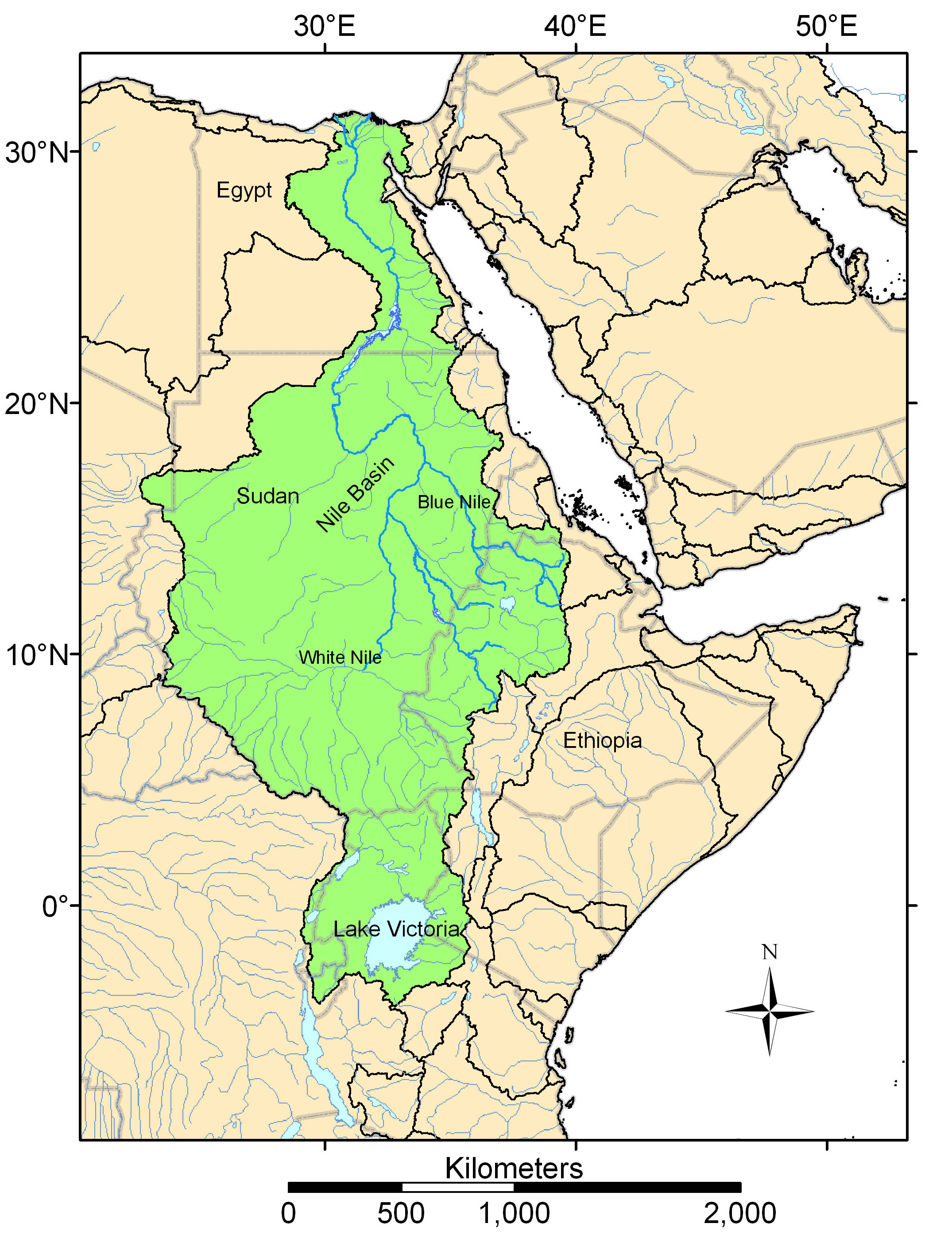|
 Egypt
and Sudan are heavily dependent on the Nile River for
sustaining their populations. In high flow years, the Lake
Nasser surface water levels rise and overflows filling
surrounding natural depressions and forming additional lakes
(Tushka lakes) in peak flow years. The underlying Nubian
Aquifer is recharged in high flow yeas, whereas the Nubian
groundwater discharges into the Nile in low flow years.
Previous studies have shown that the variability in flow
volumes in the Nile River can be partially (~30%) accounted
for by variations in the intensity of El Niño Southern
Oscillation (ENSO) events. Other previous studies suggested
that rainfall in the upper Blue Nile catchment in Sudan can be
linked to changes in the intensity of temperature variations
across the Indian Ocean (the Indian Ocean Dipole or IOD). To
test which of these events correlate best with Nile flow
volumes, Nile flow records in the Blue Nile (above Khartoum),
the White Nile (above Kharthoum), and combined flow at Wadi
Halfa covering the time period from 1902 to 1962 were analyzed
together with SST measurements. Peak and minimum discharge,
and quarterly measurement from each gauge were obtained. The
intensity of El Nino 3.4 and 4, and of the Indian Ocean Dipole
variations from the reconstructed SST dataset hadlSST covering
the same time period were used. The best correlation was found
to exist between fluctuations in the IOD in the Spring
(Apr-May-Jun) preceding the peak flow (usually occurring in
August) and maximum discharge at the Blue Nile Gauge above
Khartoum (Correlation coefficient of 0.65). Variations in El
Nino intensity for the same time period showed lower
correlations with peak and base Nile flow in the Blue Nile
(0.55). This indicates that the intensity of the Indian Ocean
Dipole has been a better predictor than El Nino for peak Nile
Flow volume. Results highlight the potential for using the
latter relationship for predicting Nile Flow volumes flowing
in Lake Nasser and for modeling the corresponding recharge and
storage in the Nubian Aquifer under future model climatic
scenarios. Egypt
and Sudan are heavily dependent on the Nile River for
sustaining their populations. In high flow years, the Lake
Nasser surface water levels rise and overflows filling
surrounding natural depressions and forming additional lakes
(Tushka lakes) in peak flow years. The underlying Nubian
Aquifer is recharged in high flow yeas, whereas the Nubian
groundwater discharges into the Nile in low flow years.
Previous studies have shown that the variability in flow
volumes in the Nile River can be partially (~30%) accounted
for by variations in the intensity of El Niño Southern
Oscillation (ENSO) events. Other previous studies suggested
that rainfall in the upper Blue Nile catchment in Sudan can be
linked to changes in the intensity of temperature variations
across the Indian Ocean (the Indian Ocean Dipole or IOD). To
test which of these events correlate best with Nile flow
volumes, Nile flow records in the Blue Nile (above Khartoum),
the White Nile (above Kharthoum), and combined flow at Wadi
Halfa covering the time period from 1902 to 1962 were analyzed
together with SST measurements. Peak and minimum discharge,
and quarterly measurement from each gauge were obtained. The
intensity of El Nino 3.4 and 4, and of the Indian Ocean Dipole
variations from the reconstructed SST dataset hadlSST covering
the same time period were used. The best correlation was found
to exist between fluctuations in the IOD in the Spring
(Apr-May-Jun) preceding the peak flow (usually occurring in
August) and maximum discharge at the Blue Nile Gauge above
Khartoum (Correlation coefficient of 0.65). Variations in El
Nino intensity for the same time period showed lower
correlations with peak and base Nile flow in the Blue Nile
(0.55). This indicates that the intensity of the Indian Ocean
Dipole has been a better predictor than El Nino for peak Nile
Flow volume. Results highlight the potential for using the
latter relationship for predicting Nile Flow volumes flowing
in Lake Nasser and for modeling the corresponding recharge and
storage in the Nubian Aquifer under future model climatic
scenarios.
|